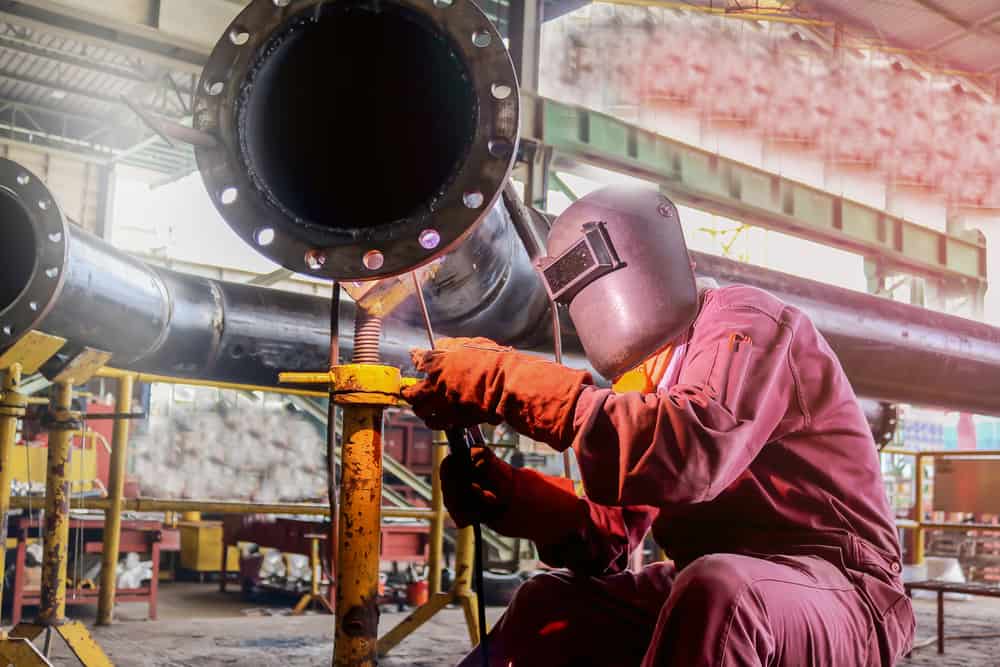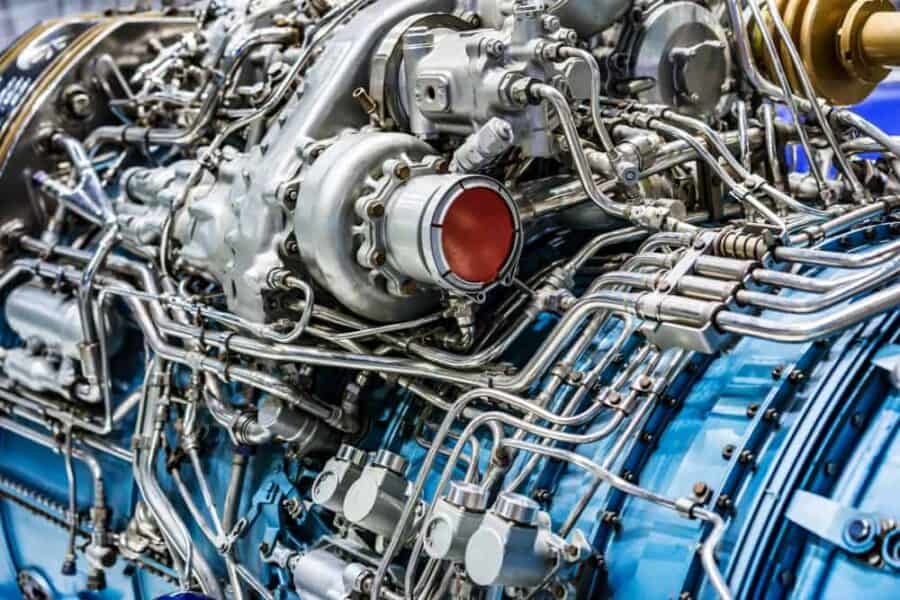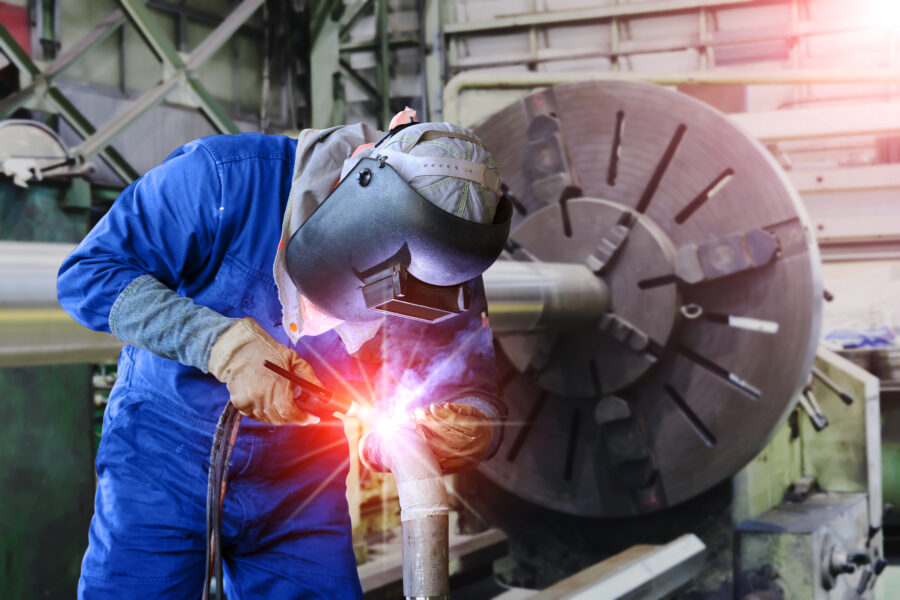One way to get a welding job is to wander into a structural steel shop in steel-toed boots, permanently stained jeans, and a ragged hoodie covered with burn holes and make a few welds. If the supervisor is satisfied with the weld, the welder may be asked to start that day. Other times the weld samples will be sent off for testing, where they are broken apart in a machine press. If they don’t break before needing to force level, the welder can expect to start later that week. These are both examples of weld qualifications.
However, sometimes a more formal process is needed. Welding certification types are a process of educating and testing. Typically, a certifying body provides these certifications. Welding qualifications are part of the process, but the main differentiator is the additional education in metallurgy, welding principles, and welding theory. This process offers a more thorough understanding of fabrication and is the basis for career advancement. There are many welding certification types, but the standard in North America is the certification provided by the American Welding Society or (AWS).
What Are the Welding Certification Types?
The AWS offers a wide variety of welder certification types. These encompass multiple levels of welding to ensure that only welds of acceptable quality make it through to the products and structures society uses every day. Welding certification types include:
- Certified Welder
- Certified Associate Welding Inspector
- Certified Welding Inspector
- Senior Certified Welding Inspector
- Certified Welding Educator Program
- Certified Resistance Welding Technician
- Certified Radiographic Interpreter
- Certified Welding Supervisor
- Certified Welding Engineer
- Certified Robotic Arc Welding
- CWI by IIW Diploma
The primary welding certification type that most will be concerned about is the initial certified welder certification. The certification process requires the welder to produce qualified welds to the standards set by the ASME using specific welding processes on set materials of a specified thickness. The exact requirements can be viewed in the table below.
ASME Requirements
| Code | Process | Gas | Filler | Base | Position(s) | Requirements | Certification Name |
| D1.1 | SMAW | – | E6010E7018 | 3G | U ⅛” Unlimited⅜” Plate | SMAW Plate | |
| D1.1 | GMAW | AR/CO275/25 | ER70S-X | 3G | U ⅛” Unlimited⅜” Plate | GMAW Plate | |
| D1.1 | FCAW | – | E71T | 3G | U ⅛” Unlimited⅜” Plate | FCAW Plate | |
| D1.1 | GTAW | AR | – | A36 | 3G | U ⅛” Unlimited⅜” Plate | GTAW Plate |
| D17.1 | GTAW | AR | ER309 | M8 | 3G | .0388 – .232 | Stainless Steel 18 -10 |
| ASME Sec. IX | SMAW | – | E6010E7018 | SA106-BA53-B | 6G | U ⅛” Unlimited6” Pipe – 0.280 wall | SMAW Pipe |
| ASME Sec. IX | GTAW | AR | ER70S-X | SA106-BA53-B | 6G | U ⅛” Unlimited2” Pipe – 0.218 wall | GTAW Pipe (Carbon Steel) |
| ASME Sec. IX | GTAW | AR | 309L | SA106-BA53-B | 6G | U ⅛” Unlimited2” Pipe – 0.218 wall | GTAW Pipe(Stainless and Carbon Steel) |
| ASME Sec. IX | GTAW | AR | 316L | 304 | 6G | U ⅛” Unlimited2” Pipe – 0.109 wall | GTAW Pipe (Stainless Steel) |
| ASME Sec. IX | GTAWSMAW | AR- | ER70S-XE7018 | SA106-BA53-B | 6G | U ⅛” Unlimited2 3/4” Pipe – 0.625 wall | GTAW/SMAW Pipe(Carbon Steel) |
| ASME Sec. IX | GTAWSMAW | AR- | ER80S-B2E8018-B2 | SA106-BA53-B | 6G | U ⅛” Unlimited2 3/4” Pipe – 0.625 wall | GTAW/SMAW Pipe (Chrome and Post Weld Heat Treatment) |
| ASME Sec. IX | GTAWSMAW | AR- | ER70SXXE7018 | A53 | 6G | 2.875” Unlimited6” Pipe – Sch 40 Pipe | GTAW/SMAW Pipe(Chrome carbon steel) |
These testing standards are specific to AWS, which only extends across the United States. There are welding certifications from other national bodies and other industry institutions, and not all of these certification types are interchangeable. Some national certifying bodies have reciprocity agreements with others, although the welder will have to apply for and receive this reciprocity. Other welding certification types don’t even transfer across state borders and require the welder to complete a new course of qualifications.
Who Offers Welding Certification?

Welding certifications and weld qualification assessments are offered by several bodies. Some are more exacting than others, and there is rarely direct equivalency between certifying bodies. For example, the Department of Transportation for individual states in the US is fairly well known for having exacting certification standards for the fabrication and assembly of roadway signage. This qualifies the welder for well-paid work in the state but doesn’t transfer to other states, and it may not qualify a welder for work in other industries.
A few examples of these certifying organizations are:
- American Petroleum Institute (API)
- American Society of Mechanical Engineers (ASME)
- American Society for Testing and Materials (ASTM)
- State and Federal Departments of Transportation (DOT)
- European Welding Federation (EWF)
- American Welding Society (AWS)
The standard welding certification types are offered by the American Welding Society. These are, to a degree, interchangeable with those offered by the European Welding Federation. These national and international certifying bodies are part of the International Institute of Welding (IIW), as are most national certifying bodies worldwide. This means that welding certification types are, to a certain extent, equivalent to each other. A certified welder will have to apply for reciprocity and receive it from the certifying body that has jurisdiction over where they want to weld.
Building on Welding Certification Types
As comprehensive as these welding certifications might appear, they are really just certifications in the basic knowledge needed to start a welding career in most industries. For example, the welding of aluminum, a very common metal, is not covered in this basic certification process. The focus is on steel, stainless steel, and chrome steel. True mastery of welding requires additional practice that only comes with years of experience. An example can be found in how welders become certified to work with automated systems.
Becoming certified with AWS requires someone to have worked as a welder for at least 6 months or worked with robots for three or more years. This demonstrates that developing the ability to read a weld puddle is the key factor in becoming a certified welder, whether starting with a steel pipe or tube or learning to work with automation like orbital welding.
Increasingly, the industry is turning to automation to make up for labor shortfalls, with skilled trades like welding being one of the fields where the shortage of skilled labor is most felt. There is little doubt that the future of welding is going to lean heavily on automation.
Arc Machines, Inc. is an industry leader in developing orbital welding systems for steel and stainless steel pipe, tube, and tubesheet. To begin learning about orbital welding training and GTAW welding, contact us today.




